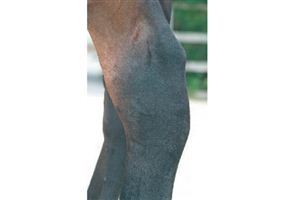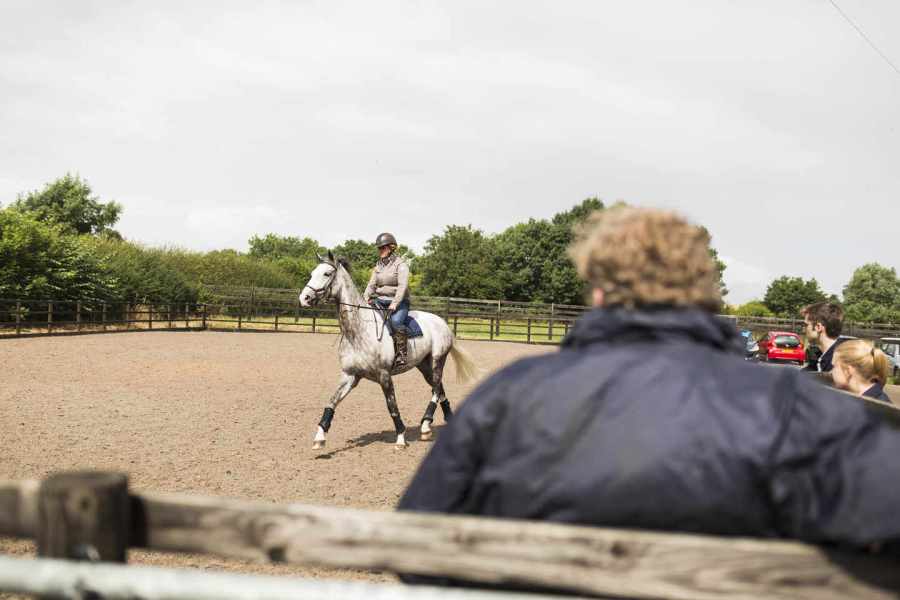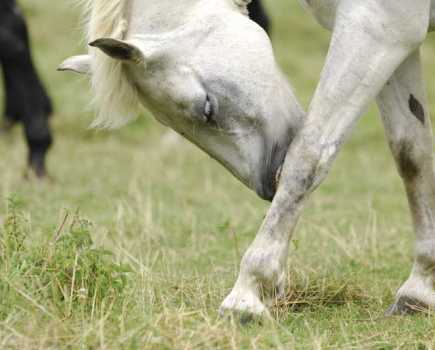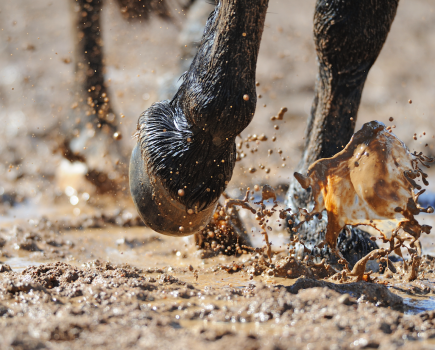 A ‘curb’ on a horse’s leg is a swelling over the back of the hock, just above the tendons that run down the canon bone. Traditionally, the swelling was thought to be due to inflammation of the long plantar ligament, which is located in this position. However, advances in ultrasonographic imaging have identified a number of additional soft tissue structures that can produce this type of swelling.
A ‘curb’ on a horse’s leg is a swelling over the back of the hock, just above the tendons that run down the canon bone. Traditionally, the swelling was thought to be due to inflammation of the long plantar ligament, which is located in this position. However, advances in ultrasonographic imaging have identified a number of additional soft tissue structures that can produce this type of swelling.
If you see a swelling on your horse’s leg, your first reaction might be to panic and wonder: will it take ages to mend, cost me a fortune and potentially affect my horse’s future? But with good management, most leg problems in horses can be prevented and early intervention from your vet will more often than not lead to successful treatment. This is true of curb swellings.
The term ‘curb’ now refers to a range of different inflammatory conditions in this region of the horse’s limb. As with splints, conformational defects can make horses more likely to develop problems. Those with sickle hock and ‘in at the hock’ conformation are most at risk. Direct trauma in the region at the back of the hock can result in curb formation as can a strain-induced injury to any of the tendons or ligaments in that area.
Diagnosis and treatment of a curb
The appearance of a curb swelling is best seen from the side — the bowing will show at the back below the point of the hock (see image above right). The degree of associated lameness is variable, from none to severe, depending on the soft tissue structure involved and the extent of the injury.
Ultrasonographic examination is crucial to decide on the most appropriate treatment and an accurate prognosis. Horses with curb swellings may also have associated hock problems such as osteoarthritis and it’s important that the source of pain is accurately identified.
In the early, acute stages, there may be obvious signs of inflammation and lameness. In more long-standing cases, the swelling may be hard and fibrous, without heat or pain and only a subtle lameness or reduction in performance.
Curbs arising from direct trauma usually result in swelling around — rather than within — the tendons or ligament. These cases can usually be managed with local injection of corticosteroids to reduce the swelling and prolonged rest is not normally required.
Infection of the area may result from traumatic injury and antibiotics may be needed. Spread of infection into the tendons or ligament in that region is a serious complication requiring long-term therapy. Inflammation of the tendons or ligament in the curb region requires strict rest for the horse in order to prevent further tendon fibre damage. Local cold therapy such as cold water hosing and anti-inflammatories are also useful.
Find out more about assessing a horse’s lameness and keeping horses sound.
Love hacking? Join our free #Hack1000Miles challenge and see how far you can go!










